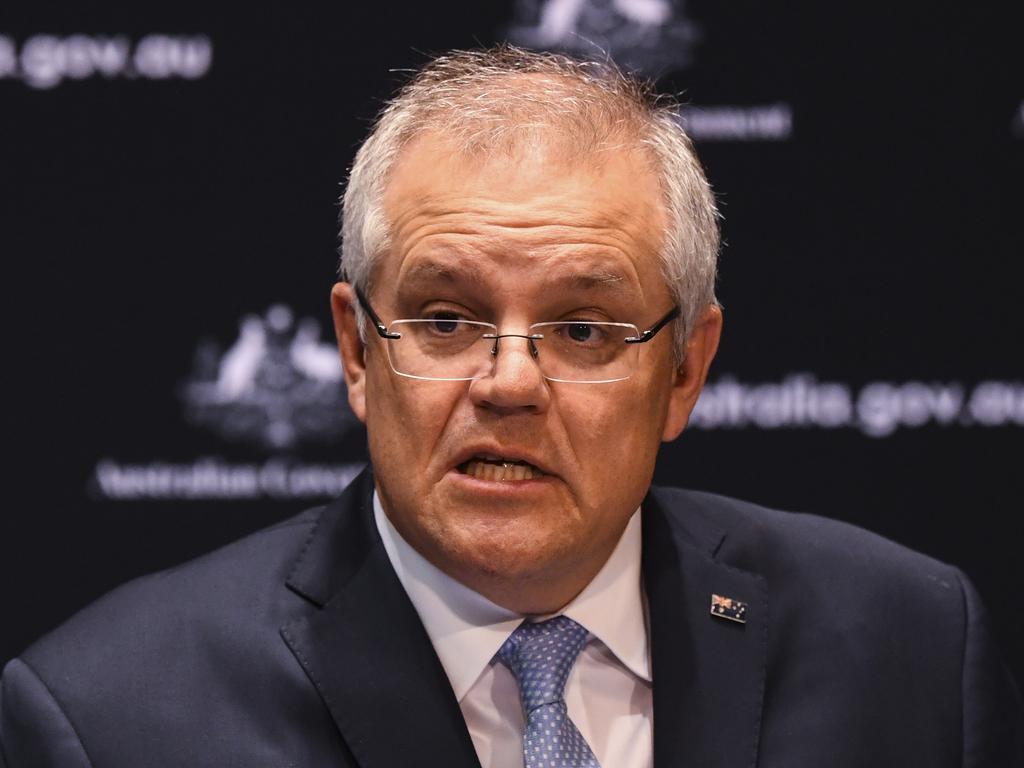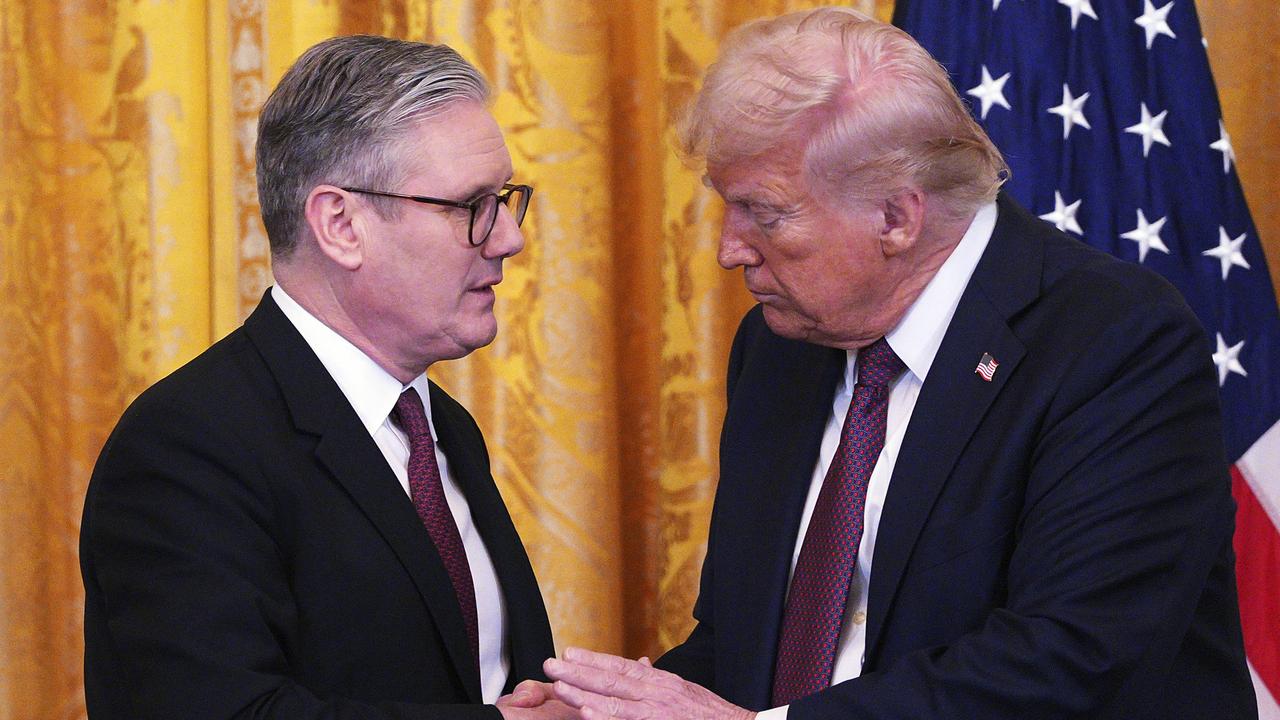Treasury money-go-round keeps home fires burning
It’s become a routine — rake in $2bn, watch it devoured by JobKeeper, and do it all again the next day.

Like most workplaces, the Australian Office of Financial Management has settled into a daily, post-COVID-19 routine — rake in $2bn from an oversubscribed bond issue, watch it devoured by JobKeeper and other government support programs, and do it all again the next day.
The AOFM, which manages the nation’s debt and cash portfolios from half of a floor of the Treasury building in Canberra, is in the groove now.
But last March as the coronavirus closed in and global markets convulsed? Not so much.
Chief executive Rob Nicholl recalls a series of telephone conversations with Treasury secretary Steven Kennedy about the 2019-20 bond program, which would mushroom from $55bn last December to a proposed $130bn in May when the cost of the economic stimulus programs was finalised.
Evidently, the riding instructions from Kennedy were to scrounge an extra $75bn to pull the economy back from the brink.
Pronto, if you wouldn’t mind. It was pretty full on; I can’t even remember the sequence of the conversations,” Nicholl, a former deputy secretary of the Tasmanian Treasury, tells The Weekend Australian.
“From that mid-March period when the markets began to freeze up, it’s all a bit of a blur, and at the same time the pandemic stuff was unfolding, almost in secret but in parallel with the market turbulence.”
There were few, if any, warning signs that March would unleash hellfire and damnation.
As late as February 20, all was calm as local stocks cruised to a record high.
By the end of the month, however, the market had crashed 10 per cent, erasing $210bn in value — the worst five-day period since the 2008 financial crisis.
Not to be denied, the dollar tumbled to its lowest level in 11 years.
Economies were locking down as the pandemic spread.
Australia had only 25 cases but it was cold comfort — the outlook was fearfully bad.
March 2020 will be remembered as the month that governments, financial regulators and banks used every means at their disposal to prevent the economy sliding into a depression.
By the end of the month, the Morrison government had announced $259bn of fiscal and balance-sheet support, or 13.3 per cent of GDP over the forward estimates.
Direct fiscal measures were equivalent to 6.9 per cent of GDP.
The banks came to the party with repayment holidays for SMEs and households, and Reserve Bank governor Philip Lowe lapsed into hyperbole, pledging to do “whatever is necessary” to protect the nation from the ravages of the pandemic. They were all fine words but the money had to come from somewhere, and the markets had gone rogue.
Nicholl, for his part, prefers “dislocated” — it sounds benign but is actually a catastrophic interruption to normal service.
“Globally, all financial markets were in disarray, and Treasury markets weren’t functioning properly,” he says.
“We went through a period where there was virtually no buying and only selling.”
The trading banks, he says, normally act as shock absorbers by purchasing bonds at AOFM auctions, and selling paper to investors.
But with the banks only in sell-mode, the AOFM’s capacity to issue bonds was severely constrained.
“We were pretty quickly in a world of diminished capability,” Nicholl says.
“That’s what people are describing when they say liquidity has dried up; it’s not being able to buy and sell stock in reasonable volumes at any time you want.”
Ultimately, the RBA had no choice but to intervene, and there were two reasons to do so, according to the AOFM chief.
First, it wanted to keep the three-year bond rate at 0.25 per cent, because it’s such an important benchmark rate in determining funding costs across the economy.
Also, as Lowe himself said, the RBA has been prepared to smooth volatile markets when liquidity conditions are “highly stressed”.
This was precisely the situation in the bond market, although the governor stressed that the RBA would only operate in the secondary market and not purchase bonds directly from the government.
The dysfunction in the bond market was being caused by investors selling bonds back to the banks, so the RBA cleared the backlog, which enabled the banks to resume their role as market makers.
By the back end of April, when the central bank had bought $47bn in bonds, the job was largely done.
As the RBA withdrew, the AOFM stepped in, massively scaling up its issuance.
Pre-COVID, the agency was raising $1.2bn-$1.6bn a week from global investors, such as banks, central banks and sovereign wealth funds.
Since March, average weekly issuance has leapt more than five-fold to $10bn. The number of zeros is eye-glazing, almost to a point where the raw figures become meaningless. Nicholl shrugs and says it’s all relative.
Earlier this month, the Parliamentary Budget Office estimated that COVID-19 would worsen the 2019-20 deficit by $70bn and the 2020-21 deficit by $190bn, compared to last December’s Mid-year Economic and Fiscal Outlook.
Both figures are rounding errors compared to the $US3.7 trillion deficit forecast for the free-spending Trump administration. “So we might hold a $5bn bond auction and think it’s large, but they might do one for $US40bn,” Nicholl says.
All up, the AOFM is managing $666bn of Australian government securities on issue, including $574bn of longer-term instruments known as Treasury bonds and $54bn of shorter-term Treasury notes.
Nicholl is not one to fret about the explosion in global debt since the financial crisis, or at least Australia’s contribution to the seemingly never-ending upward spiral.
As a AAA-rated issuer, the nation is in the top-tier of sovereign borrowers measured by financial soundness.
The AOFM chief was always confident the market would take Australia’s funding task in its stride.
“It’s more the rate at which you have to do it than the size of the task,” he says.
“So if you had to get $300bn in a month, that’s different than having to get it over 18 months or two years.”
It still leaves the nuanced issue of whether the RBA is participating in an elaborate money-go-round where it effectively ends up financing the budget deficit. Lowe was quick to shoot this proposition down. It starts with the AOFM issuing bonds, which are purchased by the RBA on the secondary market, which trigger a coupon payment to the central bank, which is transmitted to the government as dividends.
The governor insisted in April that the RBA doesn’t finance the government; instead, the government finances itself in the market.
“One of the underlying principles of Australia’s institutional arrangements is the separation of monetary and fiscal policy,” Lowe said. “This principle has served the country well.
“While we are not directly financing the government, our bond purchases are affecting the market price that the government pays to raise debt.
“But our actions should not be confused with the Reserve Bank financing the government.”
Unsurprisingly, Nicholl supports Lowe, but agrees that it “depends on who you ask”.
“The RBA wasn’t buying directly from us,” he says.
“It’s a moot point if they’re taking stock away from the banks and enabling them to buy bonds from us, but the bonds that the RBA bought from the trading banks are not the same as the ones we were issuing as part of the program.”







To join the conversation, please log in. Don't have an account? Register
Join the conversation, you are commenting as Logout